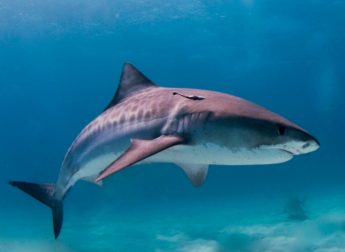Overview
Quick Navigation
Sharks are one of the most dreaded creatures in the seas. They are considered one of the deadliest creatures in our seas and can be found in all the seven oceans in the world. Most common depictions of sharks show them with long snouts and wide jaws located under their snouts. There are, however, many species of sharks that do not fit into this image. Sharks are great hunters, and out of the over 400 species of sharks that inhabit the oceans, about 200 species are considered endangered.
Read about dive fins here.
Species of Sharks
Sharks have been around for over 400 million years, and through the years, there have been different stages of evolution for the animals. Many species of sharks are extinct, but there are currently over 400 species of sharks in the world, including the great white sharks, hammerhead sharks, blue sharks, whale sharks, and dwarf lantern sharks.
Habitats of Sharks
Sharks are found in all oceans; most of the species of sharks live in saltwater habitats around the world. The creatures are, however, very adaptive, with some habiting mixtures of saltwater and freshwater habitats while others live entirely in freshwater habitats.
Sharks have many other adaptive features based on how deep their habitats are. Species that live in very deep and dark waters have more giant eyeballs to aid their sense of sight.
Sizes of Sharks
The whale shark is so named for its bulk. Whale sharks are the most giant shark species in the world. The sharks can grow up to 55 feet and weigh over 30 tonnes. This variety of sharks that are endangered are rarely seen. They can be identified with their great bulks and the individually unique spots that cover their bodies.
Next comes the basking sharks, which measure about 10 feet less than the whale sharks. These sharks are known for their very huge jaws. According to researchers, a fully developed basking shark can swallow a grown human up if it stretches it’s over 3 feet wide mouth.
Great white sharks and tiger sharks are also known for their great bulks. To humans, great whites are the most dangerous sharks in the world. They have up to three hundred triangle-shaped teeth that have divided and sharp saw-like edges. Their weaponized teeth, fast-swimming speed, and vile tempers make them the most feared and famous sharks in the world.
Some sharks come in very small forms; an example is the dwarf lantern shark is just about 8 inches long.
Feeding and Hunting Habits of Sharks
Most big sharks have powerful jaws, and subsequently, powerful bites. A great white has about 4000 psi, which is slightly higher than the pound per square inch of crocodiles and four times higher than the bite force of lions at 1000 psi.
With their lower jaws, most sharks grab prey and tear into their flesh with their upper jaws. Sharks eat only flesh, tearing into bones, tissues, and flesh with their huge jaws. Some have serrated teeth while others have smooth teeth but what most of the big sharks have in common is the brutality of their bite forces.
Shark species such as the great whites often lose their teeth due to their cartilaginous skeleton and brutal hunting activities. Fortunately for them, they can replace the lost teeth in a little less than a week.
As against popular belief, sharks do not have great feasts after hunting. Most sharks only eat about 2% – 8% of their total body weights every week. That is even more than what humans eat on average daily.
Sharks feed on just about anything in the oceans, from fish to crabs, squids, sea urchins, and others. However, a lot of them have preferences. For example, great whites are notorious hunters of sea lions, while hammerheads tend to go for stingrays.
Sharks are Cannibals
Sharks eat sharks, and it starts from even before they are born. Female sharks sometimes have difficulty getting enough sperm to fertilize their eggs, so they get donations from different fathers. Researchers say this might be responsible for mature eggs and live young feasting on weaker siblings.
Cannibalism does not end in the mother’s womb; it continues well into the lifetime of sharks. Great whites feed on smaller sharks, as do bull sharks, which seem to prefer sharks to any other meal type.
Means of Reproduction
Sharks adopt three means of bringing their young ones into the world. Some give birth to their young ones alive, like humans (viviparous), some lay eggs in leathery cases and store them in rock crevices (oviparous) while the last group hatches their eggs in their oviducts, nourishing the eggs through a placenta (ovoviviparous).
Silvertip, hammerheads, blue, lemon, and salmon sharks belong to the first category, as they give birth to live young. Zebra sharks, catsharks, and swell sharks are examples of egg-laying sharks, while great whites and tiger sharks belong in the last group.
Predators of Sharks
There is no doubt that humans are the most deadly hunters of sharks. Sharks are killed in their millions every year in Hong Kong and other places in the world. Almost every part f a shark is used by humans who use very violent methods such as finding to end the lives of the precious sea creatures.
One of such violent methods is finning. Shark hunters brutally cut off the fins of sharks and throw them back into the water to suffer and die. Millions of sharks are put through this kind of agony every year.
Maulings and Deaths Caused by Sharks
Though brutal and often fatal, human run-ins with sharks are not as common as often projected. In 2020, researchers found about 13 deaths out of about 129 shark attacks—a reasonable percentage of the run-ins were initiated by humans and not the sea creatures.
The great white is the shark with the highest number of attacks on humans that did nothing to warrant it. Many areas with frequent shark attacks are going more to warn swimmers, especially during shark seasons.
Conclusion
Sharks are brilliant animals with so many unique features that allow them to cope in and rules all the oceans of the world. They have been around for millions of years, and unlike popular belief, humans are killing them faster than they could ever harm humans.
Also, read about the difference between wetsuits and drysuits‘.

